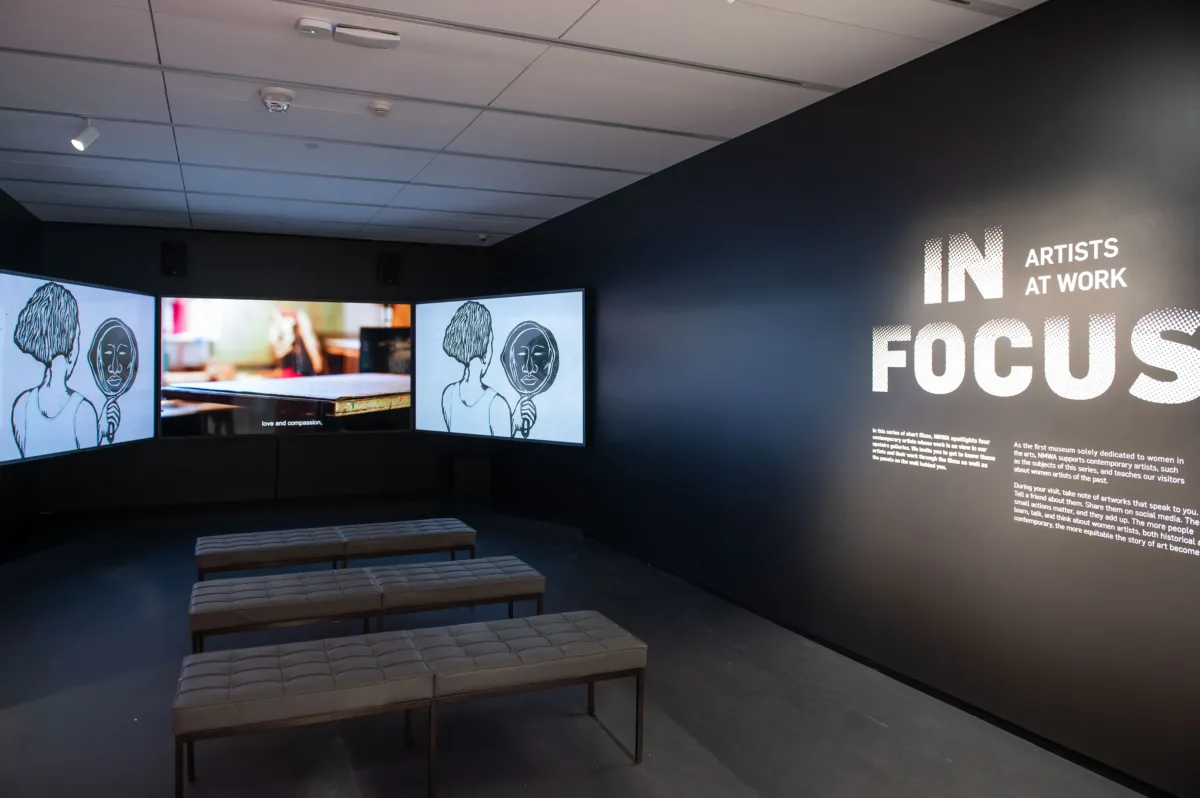Artists at Work Video Series: Delita Martin
Transcript
( gentle music )
[Delita] My name is Delita Martin.
The works that I create are large-scale mixed media prints.
If I can’t draw it, I’ll print it.
If I can’t print it, I’ll paint it.
If I can’t paint it, I’ll collage it.
Just whatever I need to do to tell the story because the story is what’s most important.
These are women who live, who work, who are mothers, who are daughters, who are wives, sisters.
Their existence is powerful, and we take for granted those little simple things, that twinkle in the eye, the tilt of the head. Those are the things that I want to preserve.
It’s important as an African American woman, as a mother, as a wife, to keep these stories.
To have such a major institution reach out and say, “hey, your voice is important.” I can’t tell you how huge that is.
I work really large, and it allows me to physically connect to the work as well as emotionally and spiritually connect.
I don’t work with sketches. I work directly on the paper.
It’s almost like a ritual.
You are going through this process of allowing yourself to be open enough for the work to tell you what it needs.
The stitching in the work is to piece together or secure history, who these women are, what they represent.
I use that term a lot, “piecing together,” is because that’s what my grandmother called her quilting.
We would quilt, and she would tell me stories about when she was growing up.
She could paint a story with her words.
She was piecing together my history one stitch at a time, and so I felt it was important for me to do the same to the women in my work.
Society has a way of making us perform.
We’re reacting to what’s happening around us, but when you meditate, when you pray, there’s this intimacy that happens.
There’s something very private and sacred about that time, and it’s like, how do you show this?
What does the spirit world look like?
And it became texture, it became pattern, and it became color.
Just being able to work on these portraits and connect with these women for me is an act of prayer, and I’m literally just a vessel in the studio.
Because the work is not about me. It’s not necessarily for me; it’s for us.
( gentle music continues )
In Focus: Artists at Work


